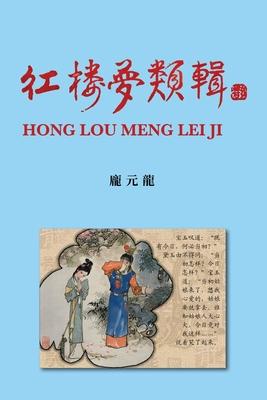《紅樓夢類輯》(Dream of the Red Mansions)作者 龐元龍先生,祖籍中國江蘇省蘇州市,生於1912年5月,上海光華大學畢業,繫出書香名門,品端學粹。
作者自幼迷上文學小說,酷愛古典文學《水滸傳》、《西遊記》、《三國演義》----尤其是《紅樓夢》中國古典小說巔峰之作,具有世界影響力的愛情小說,從青少年開始專心研究、發現、探索其價值,把人物關繫、建築禮教、愛恨情仇、經濟、文化、服裝飲食都分門歸類,深入淺出,非常到位,雅俗共賞。
龐元龍先生高度評價《紅樓夢》作者曹雪芹原著的面貌和"求真"之作,大膽地評論散佚缺失的後四十回,不僅僅而且包括書中無處不在的矛盾和缺陷,10多年來他孜孜不倦地研究和揭示這些面嚮,當時因中國社會動蕩,他的手稿作品被擱置多年。
如今,這本遲到的原稿件《紅樓夢類輯》終於公眾與世,實現了作者的夢寐以求的夙願,對後世學界和讀者研究清代的社會結構和經濟運作,有很好的參考價值,更推進"紅"學研究者從殘缺的東西中找到最完美,這部作品是中國文化對世界文化遺產的重大貢獻!"Hong Lou Meng Lei Ji" is authored by Mr. Pang Yuanlong, who was born in May 1912 in Suzhou City, Jiangsu Province, China. A graduate of Guanghua University in Shanghai, he comes from a distinguished literary family, epitomizing refined scholarship.
From his early years, the author has been enthralled by literary novels, particularly classical Chinese works such as "Water Margin," "Journey to the West," and "Romance of the Three Kingdoms." His deep affection for "Dream of the Red Mansions," a pinnacle of classical Chinese literature and a globally influential romantic novel, led him to dedicate himself to its study from adolescence. Analyzing character relationships, architectural etiquette, love and hatred, economic aspects, culture, and even attire and cuisine, he meticulously categorized and explored these elements, presenting a comprehensive and accessible analysis that resonates with both refined and common tastes.
Mr. Pang Yuanlong holds the original work and the pursuit of truth by the author of "Dream of the Red Mansions," Cao Xueqin, in high esteem. Fearlessly, he critiques the missing last forty chapters and exposes the omnipresent contradictions and flaws in the novel. For over a decade, he tirelessly researched and revealed these aspects, with his manuscripts being shelved for many years due to the societal turmoil in China during that time.
Now, the long-awaited original manuscript of "Hong Lou Meng Lei Ji" has finally been made public, realizing the author's long-cherished dream. This work holds significant reference value for future scholars and readers studying the social structure and economic operations of the Qing Dynasty. It further advances the research of scholars in "Redology," helping them find perfection amidst imperfections. This contribution stands as a significant gift from Chinese culture to the world's cultural heritage.
